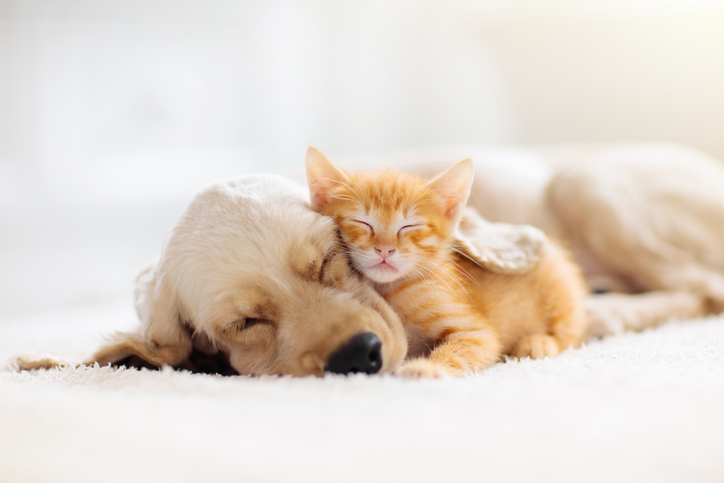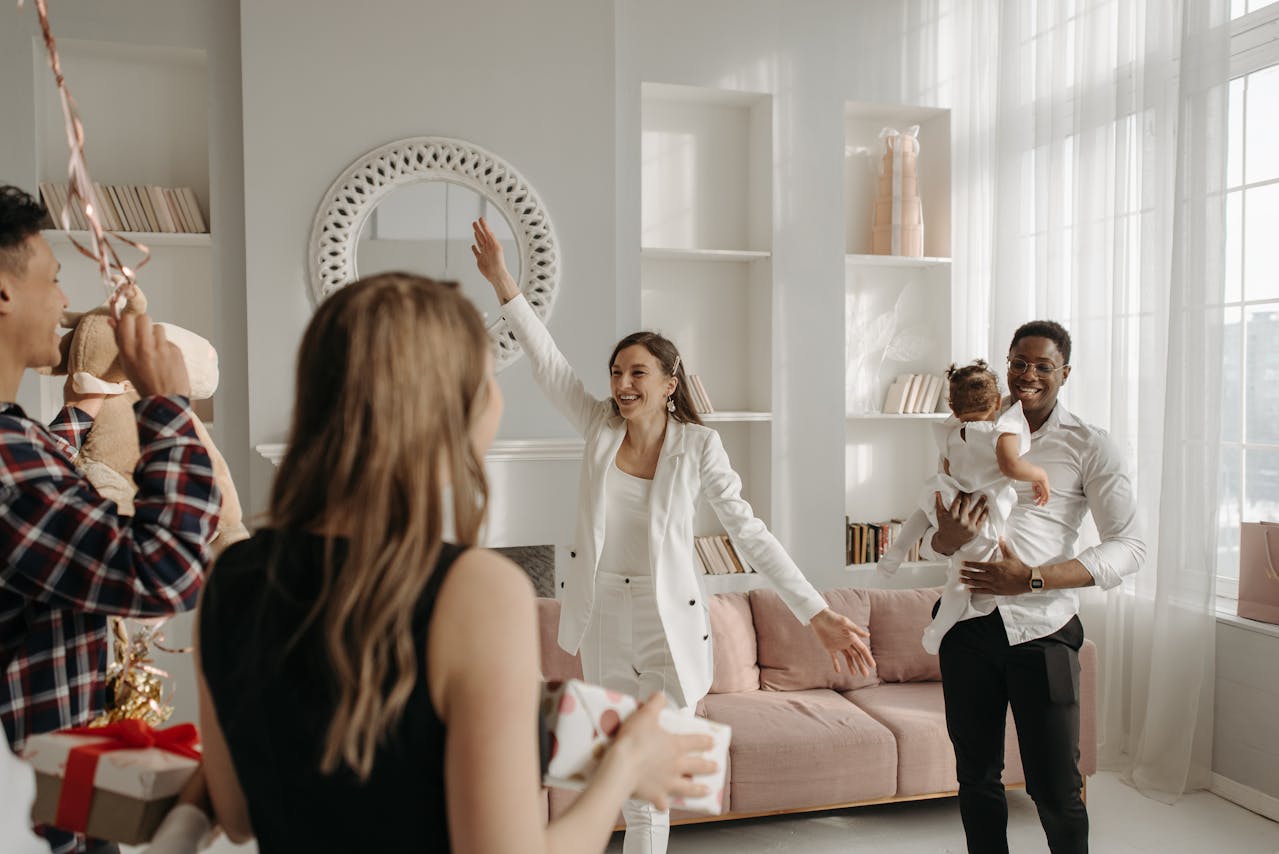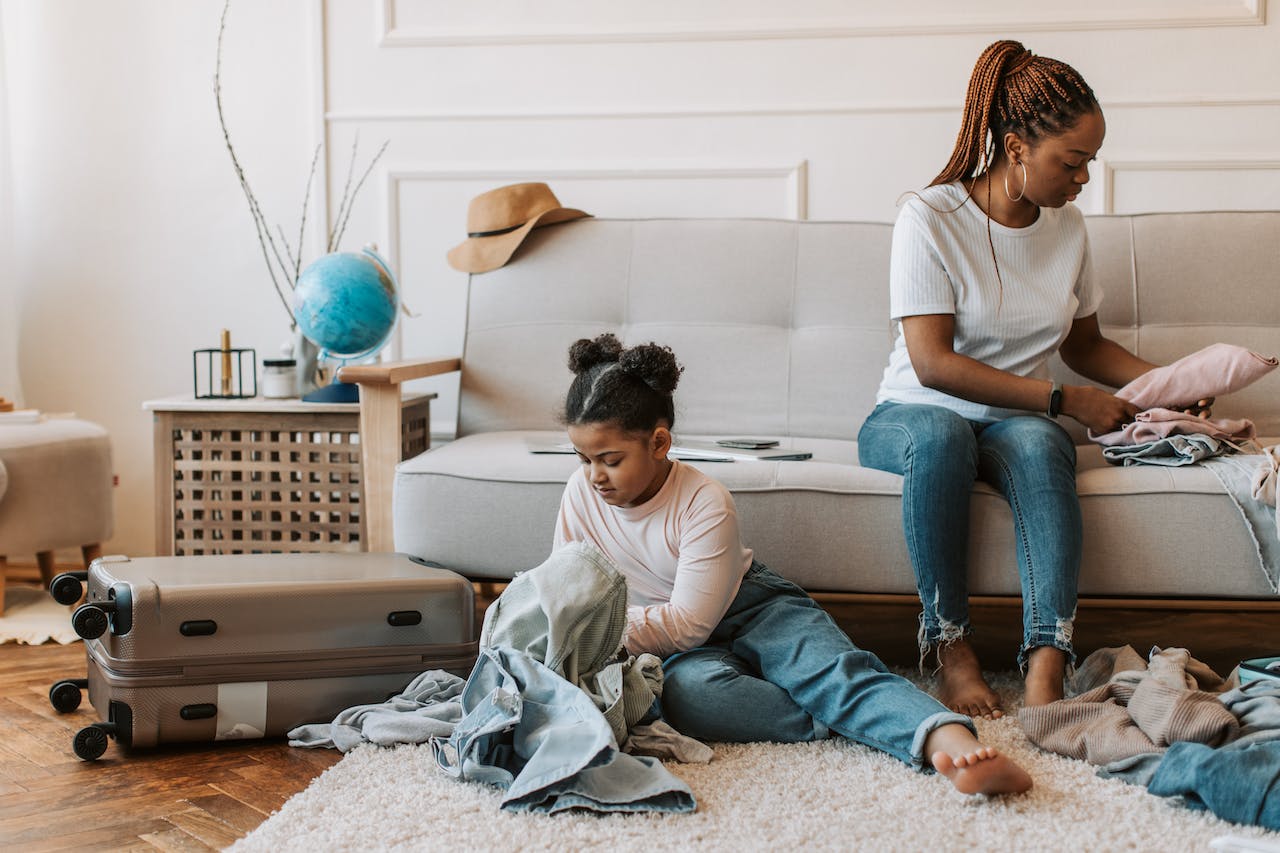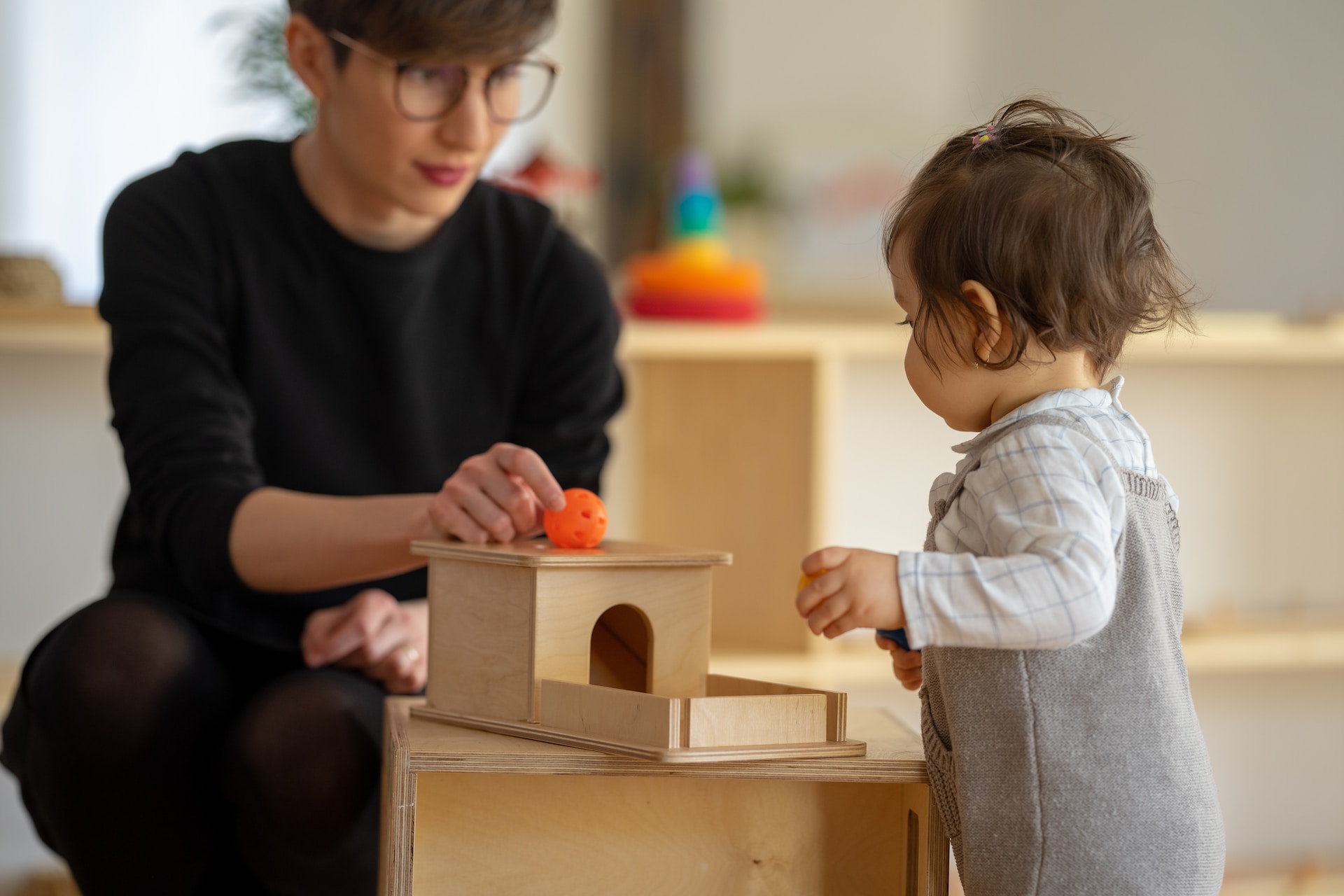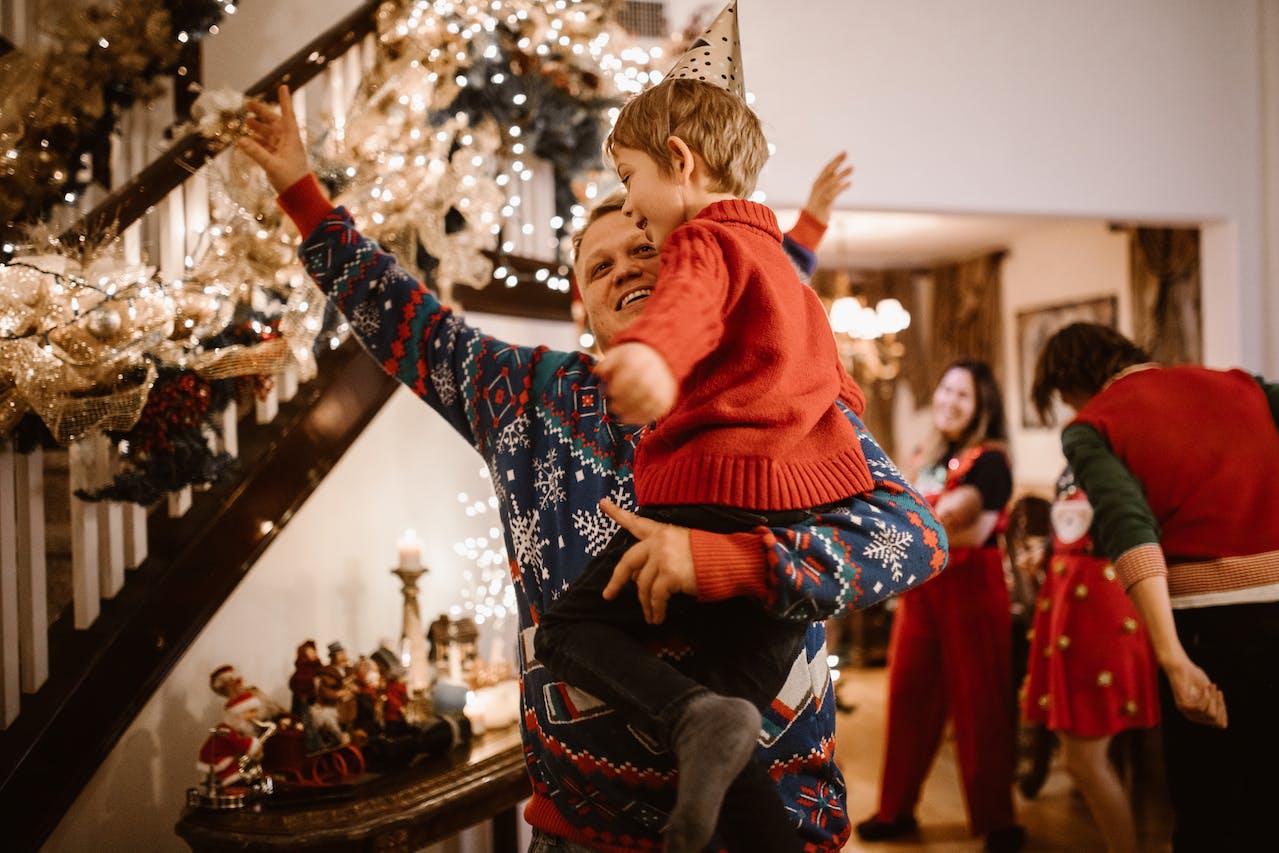So, you’re bringing your new puppy or kitten home. Congratulations on the beginning of many years of love, cuddles, and laughs. There’s nothing better than a fuzzy pet to bring a smile to your face. Raising one is a big responsibility, but so worth the effort. Before you bring home that bundle of energy and entertainment, you’ll want to pet-proof your home to keep him or her safe. Raising a puppy or kitten includes keeping eyes on him, or her and removing safety hazards before mischief turns into a trip to the vet.
Pet-proofing primer
Pet-proofing is similar to baby-proofing a home. Our advice is for both puppies and kittens (and bunnies and any other indoor pet that may roam loose). Remember when pet-proofing: cats can jump and climb much higher than dogs, so you’ll need to look both up and down when proofing your home for your new furry feline.
Pet lovers want to do the best for their new companions, and it’s simpler to put objects, like kids’ toys or hair bands, safely away than to coax a puppy or kitty to drop an offending object. Small objects can cause blockages in your pet’s stomach or intestines.
Get down on the floor and look at your house through your puppy’s eyes. What do you see? What looks tempting for a puppy to chew on? (Answer: Everything.) From electrical cords to table legs to toothpaste, everything is fair game for puppies or kittens.
When transporting your pet home, whether from the vet, a new adoption, or after a trip, there are several safety measures you should take to ensure a smooth and stress-free experience:
- Use a Secure Enclosure: Your pet should be in a well-ventilated carrier or secured with a pet seat belt or harness to prevent movement and potential injury during transport. The carrier should be the appropriate size, allowing your pet to stand, turn around, and lie down comfortably.
- Maintain a Comfortable Temperature: Ensure your vehicle’s air conditioning or heating is set to a comfortable level. Avoid extreme temperatures, and never leave your pet unattended in the car, as the temperature inside can rise or drop quickly.
- Hydration and Frequent Breaks: Especially for longer trips, ensure your pet has access to fresh water. Plan for frequent stops to allow your pet to stretch, relieve themselves, and get some fresh air.
Additionally you should always keep an eye on your pet for signs of stress, such as excessive panting, drooling, or agitation. Address any issues immediately by pulling over to a safe area.
Lazar Jovanovic from CitizenShipper
What are the most common household hazards for pets, and how can you effectively pet-proof these areas?
To effectively pet-proof your home, it’s important to identify common household hazards that could pose risks to your furry friends. Toxic plants, such as lilies, philodendrons, and pothos, are a major concern, so research and remove them, opting for pet-safe alternatives like spider plants. Household chemicals, pesticides, and antifreeze are dangerous if ingested, so always store them in locked cabinets and use pet-friendly cleaners.
Food hazards are another concern — items like chocolate, grapes, and onions are toxic to pets. Ensure human food is stored securely and avoid leaving harmful foods within reach. Small objects such as coins and batteries can be choking hazards, so keep your home tidy and regularly pick up items from the floor.
Pets can chew on electrical cords, leading to shocks or burns. Use cord covers or tape cords to the wall to prevent access. Trash bins can also be dangerous, as they may contain harmful food scraps or sharp objects, so opt for bins with secure lids.
Other potential hazards include windows, balconies, stairs, and fireplaces. Secure windows and balconies with screens or gates, use baby gates to block off stairs, and always supervise pets around open flames or heaters. Regular home inspections and pet training can also reduce risks.
Tracy Isenberg, LVT PetFriendly
Are there specific wall and/or floor finishes that are more resistant to pet-related wear and tear?
When selecting pet-resistant finishes, it’s important to choose materials that can withstand scratches, moisture, and stains. For flooring, options like tile, luxury vinyl, and concrete are excellent as they’re highly durable and easy to clean. Hardwood floors can be vulnerable to scratches but using harder wood species (e.g., oak) and protective finishes can improve resistance for a regular home setting.
In industrial settings or spaces with high pet activity, durable finishes are essential for managing wear and tear from animals and concrete becomes the best undeniable option. Abrasion resistance is crucial to prevent scratches from claws and movement from heavy equipment. Adding Hard-Cem to concrete enhances its resistance to these abrasions, making it ideal for pet-heavy environments like shelters or kennels. Additionally, moisture control is key in these settings due to frequent exposure to pet waste and cleaning chemicals. Using integral waterproofing admixtures ensures that both floors and walls are protected from staining and moisture-related deterioration, extending the structure’s lifespan.
Natalia Urena from Kryton
Creating a designated space for your pet in a small home or apartment
Maximizing limited space while ensuring your pet’s comfort is all about smart planning. Start by identifying a quiet corner or unused area that can be transformed into a cozy pet nook. Utilize vertical space with wall-mounted shelves or perches—cats, in particular, love elevated spots. Consider multifunctional furniture, like benches with built-in storage or side tables that double as pet beds, to save space. Use under-bed areas for pet bedding or toy storage. Opt for collapsible or foldable pet accessories that can be tucked away when not in use. Personalize the space with your pet’s favorite toys, cushions, and blankets to make it inviting. Ensure the area is away from high-traffic zones to provide a sense of security. Incorporate easy-to-clean materials to maintain hygiene in the compact space.
With a bit of creativity, you can create a comfortable and functional area for your pet without compromising your living space.
What are some tips for parents of aging pets to help them safely navigate a pet-proofed home as their mobility and needs change?
As pets age, their mobility and ability to perform routine tasks can become limited. Making a few adjustments around your home can ensure your senior pet stays comfortable and safe.
Here are some tips from Lap of Love :
- Provide Ramps: Senior pets often struggle with jumping onto furniture. Adding ramps to your pet’s favorite spots, like couches or beds, can prevent falls and make it easier for them to reach higher places.
- Elevate Bowls: Raise your pet’s food and water dishes to shoulder height to reduce strain on their neck and joints. This is especially helpful for pets with arthritis or mobility challenges.
- Create Accessible Spaces: For cats, setting up a designated quiet space with easy access to essentials can reduce stress. Use a low-entry litter box and place it in a private area, especially if other pets are in the home.
- Add Traction: Hardwood or tile floors can be slippery. Place rugs or runners in key areas to provide extra grip and prevent falls.
- Minimize Changes: Keep your pet’s food, water, and bedding in familiar spots. Rearranging furniture can confuse pets with declining cognitive function, so maintaining a consistent layout will help them feel secure.
With these simple changes, you can create a safer environment for your aging pet.
Dr. Dani McVety from Lap of Love
How can basic dog training help prevent accidents and damage at home?
While basic obedience training is important, relying solely on it to prevent accidents and damage at home is unrealistic. Training alone, especially in the early stages, doesn’t guarantee that a dog fully understands what’s expected in every situation. There is no one to teach your dog when you are not around. The key to preventing accidents and damage lies in management and training.
Management means creating an environment where your dog can succeed while they’re still learning. This involves setting up boundaries, using tools like crates, gates or pens, and supervising your dog to prevent unwanted behaviors before they become habits. Giving a dog too much freedom too soon, even with basic training, often leads to mishaps—whether that’s chewing on furniture, having accidents, or getting into things they shouldn’t.
Training is a long-term investment, but until your dog fully grasps the rules, management is essential. By controlling your dog’s environment, you prevent bad habits from forming out of repeated mistakes. You are also giving dogs the time and space to learn without stress.
Training teaches them, but management ensures that your home and belongings stay safe while your dog learns.

Living or family room
You and your puppy or kitty will spend lots of time in the living room, so it’s one of the first rooms to tackle in pet-proofing your home. Secure electrical cords, computer and phone charging cords, drapery cords, and any other cords at your new pet’s level. Puppies and kitties have sharp teeth and can bite into electrical cords. Secure tipsy furniture, too.
If you knit, sew, or craft, make certain that all items like yarn, needles, thread, markers, glue sticks, and fabric scraps are out of reach. Put away buttons, batteries, magnets, and other small objects. Remove knick-knacks, books, DVDs, and any valuable item on your pet’s level that you don’t want to be munched on when your head is turned.
Laundry room
Your laundry room harbors some concerns for your new family member. Detergents, bleach, stain removers, dryer sheets, and even laundry are all tempting for your new pet. Puppies and kittens can also chew on dryer vent ductwork, on washing machine water lines, or electrical lines. They can also squeeze into small spaces in or behind the washer or dryer.
Bedrooms
Bedrooms are usually a safer environment than other rooms of the house, but there still are electrical cords to protect and clothes to remove from chair backs and floors. You may also consider a waterproof mattress pad for your bed in case the puppy piddles. Keep in mind that young puppies have about as much control of their bladders as diaper-wearing babies. So, take your puppy outside often so he or she knows that’s the place to do necessary business.
Take a look at your shoes and decide if you’d like to keep them wearable. If the answer’s yes, put them above your precious puppy’s reach, and resist the urge to give your puppy old shoes or socks to play with. You may know which loafers or pumps are off-limits, but to your teething puppy, they all smell like your feet and taste like heaven.
Make sure all small bedroom items, like watches, hair accessories, remotes, cell phone chargers, jewelry, and personal items, are safely in drawers. Puppies are even known to find retainers and dentures to be tasty (and expensive to replace) chew toys.
Bathroom
Your bathrooms harbor temptations for your new pal. Stray clothes like washcloths and socks are fair game for puppies and can cause blockages. Rubber bands, razors, dental floss, hair ribbons, and rubber bands are irresistible for both kittens and puppies and are equally harmful.
Toothpaste contains xylitol, which is dangerous to pets. Always keep toothpaste, cleansers, makeup, or applicators in a secure place like your medicine cabinet. Keep the toilet lid down to prevent water-bowl behavior, and make sure toilet cleaners and drain-unclogging bottles are kept away from your pet.
Kitchen
Kitchens are full of tempting foods and potential dangers for your new pet. Making your kitchen pet-proof involves keeping irresistible but harmful foods out of their reach, including chocolate, grapes, raisins, avocados, macadamia nuts, onions, garlic, medicines, vitamins, and coffee. Research all of the foods that are off-limits to your cat or dog.
Sugar-free gums, which contain xylitol, are tasty but very dangerous for your pet. Keep these safely out of reach and remember (as your pet grows) that cats and medium to large-sized dogs can “counter-surf,” helping themselves to your just-made sandwich and more. Your pet can also swallow small objects like dropped bread twist-ties and rubber bands.
Few puppies or kittens can resist a garbage can, so try to keep those well out of reach of your pet. Some people keep trash cans in the cabinet under the sink, away from opportunistic pooches.
You may want to place a baby gate across your kitchen entrance to keep pets out when you can’t keep your full attention on them. Pets are masters at waiting underneath to catch any and all dropped food.
A crate is a safety tool
Using a crate for your puppy or kitten when you’re not home is a valuable safety tool. When you can’t be home to watch over your pet, a crate keeps him or her from dangerous situations.
Introduce the crate with kindness. Feed your pet in the crate and place toys in there for the puppy or kitty, but don’t leave toys in the crate while you’re gone. Never leave a collar on your puppy or kitten while crate training. Try to keep your new pet’s stays in the crate short because he or she just came from the constant company of littermates, mom, and humans, so being left alone for long periods can be stressful.
Insurance coverage
If your furniture, floors, walls, or any part of your home, you might want to protect yourself against financial costs. When it comes to pets, home insurance offers two key types of protection: liability coverage and optional pet damage coverage. Liability coverage is essential, as it can protect you if your pet injures someone or causes damage to someone else’s property. Your policy may cover legal and medical costs. While many homeowners’ policies include this protection, certain breeds, such as pit bulls, may be excluded, so it’s important to review your coverage.
If your pet damages your own home, most standard policies won’t cover the costs. Some insurers offer additional coverage for pet-related damage inside your home, which can help cover repairs for things like scratched floors or chewed-up furniture. Including this coverage in your policy should be part of an effective pet-proofing strategy. So that, along with keeping your home safe for your pet, you’re also financially protected from any costly mishaps.

The making of a great pet
Guiding your small, fuzzy puppy or kitten into a great companion takes patience, praise, and persistence. Puppies and kittens don’t have the reasoning ability of humans and will instead act like – well, like adorable and sometimes frustrating puppies and kittens. No pet is perfect overnight, so be patient with the process. Your pet isn’t trying to misbehave – he or she is learning your language and your rules of the house, so be clear, consistent, and kind. Reward any behavior you want your puppy to continue showing.
With good doses of patience and humor and a good session of house and yard pet-proofing, you and your new pet will quickly bond and enjoy many years of love and companionship. There’s nothing better than your purring cat snuggled up next to you or the jubilant, tail-wagging greeting from your dog as you walk in the door. Enjoy the excitement of puppyhood and kittenhood, knowing you’ve made their environment safe.
